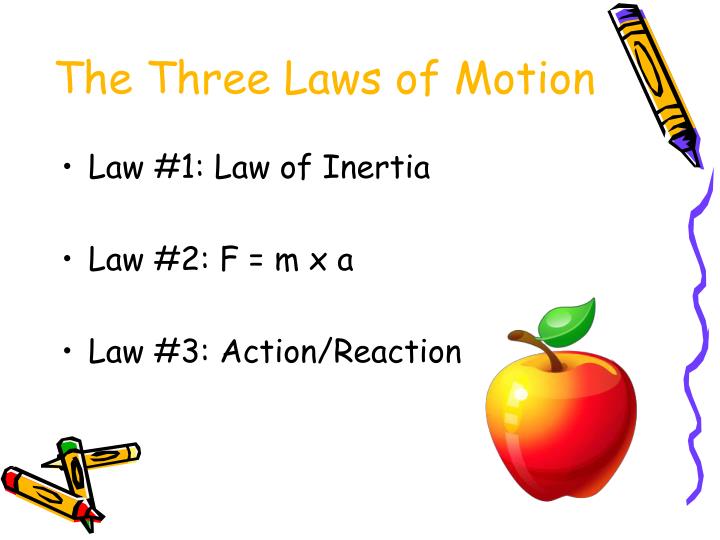

These inconsistencies were remedied by Einstein's Special Theory of Relativity for high speeds, and by quantum mechanics for small objects. Note: While the combination of these three laws, along with Newton's Law of Gravity, provide a workable foundation for explaining the motion of everyday physical objects under everyday conditions, when applied to extremely high speeds or incredibly small objects, Newton's laws don't quite hold up. To every action (force applied), there is an equal and opposite reaction (equal force applied in the opposite direction). The rate at which the momentum of a body changes is directly proportional to the net force acting upon it, therefore, the direction of the change in momentum occurs in the direction of the net force. Objects in motion tend to stay in motion, and objects at rest tend to stay at rest unless an outside force acts upon them. While the following three Laws of Motion have been modernized, they are based upon the original versions introduced by Newton.

When applying Newton's Laws of Motion, bear in mind that they describe only the motion of a body as a whole and only pertain to motions relative to a particular frame of reference. In short, his laws provide a working understanding of how physical objects move. The Principia also formed the foundation of classical mechanics, Newton’s law of gravity and derived Kepler’s laws of planetary motion.Essentially, Newton's Laws of Motion explain the nature of the relationships that exist between the forces acting on a body and the motion of the body. Newton’s laws of motion originally appeared in his “Principia Mathematica Philosophiae Naturalis”, which is a work in three books by Isaac Newton. These include quantum mechanics, special relativity and general relativity. So, physicists have come up with a range of other ways to describe the universe. While Newton’s laws work really well for everyday objects and situations, they don’t work inside extreme environments such as inside atoms or in outer space.
LAWS OF MOTION HOW TO
Newton’s laws also laid the groundwork for later developments in physics and are one of the earliest examples of how to predict the world we live in with simple mathematical formulas. Newton’s laws predict the motion and interactions of objects well enough to explain how planes and rockets generate lift, how to measure the mass of the Earth and the movement of planets and other bodies in our Solar System. Newton’s laws of motion tell us exactly how everything around us moves. If object A exerts a force of object B, then object B also exerts an equal force on object A. In other words, for every action (force), there is an equal and opposite reaction. When an object is pushed in one direction, there is always a resistance of the same size in the opposite direction. Thanks to this equation, we can determine the position and velocity of an object at any time in the past or future. A force will cause a change in velocity and, likewise, a change in velocity will generate a force. Where F is the force, m is the mass of the object and a is its acceleration (change in velocity). This is described in the following equation: In the simplest terms, an object will move further and faster the harder it is pushed or pulled. This law explains how the velocity of an object changes when an external force is applied. If the velocity is zero, the object remains at rest. In other words, if no net force acts on an object (if all external forces cancel each other out) then a moving object maintains a constant velocity. So, the velocity (speed and direction of travel) of the object will change because of that external force. The key point is that if an external force is applied it was size and direction. This push or pull is called a ‘force’ in physics If an object is moving, it will not stop or change direction unless something pushes or pulls it. If an object is stationary (not moving), it will not start moving by itself. Isaac Newton published his three laws of motion in 1687.


 0 kommentar(er)
0 kommentar(er)
